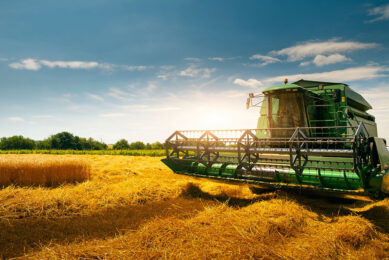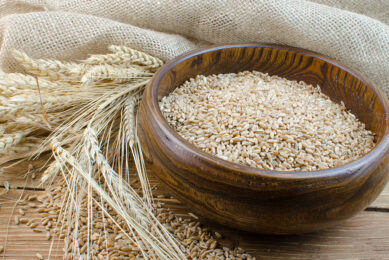Intercrop soybeans have economic and yield benefits

Researchers have found that planting soybeans into standing wheat can not only produce higher soybean yields but can also result in significantly higher earnings compared to planting a traditional double crop of soybeans.
The technique, called modified relay intercropping of soybeans, allows growers to capture 66% of the traditional Ohio growing season to produce a second crop through the inter-planting of soybeans into wheat in late May or early June, said Steve Prochaska, an Ohio State University Extension field specialist and member of the university’s Agronomic Crops Team.
Based on extensive research at the Ohio Agricultural Research and Development Center (OARDC), modified relay intercropped wheat can yield at least 90% of conventional wheat, Prochaska said.
“In 14 years of research trials in north central Ohio on the modified relay intercropping system, yields have averaged 76 bushels per acre for wheat and 28 bushels per acre for soybeans,” he said. “Wheat yields in favourable growing seasons have exceeded 90 bushels per acre, while soybeans have yielded well over 45 bushels per acre.”
Growers interested in learning more about modified relay intercropping of soybeans can attend a workshop during a field night Sept. 4 offered by agronomists from OSU Extension and the OARDC. OSU Extension and OARDC are the outreach and research arms, respectively, of the college.
The workshop is from 6:30 to 8:30 p.m. at the OSU Unger Farm, 1303 Nevada Road in Bucyrus. The program is free and open to the public, said Jason Hartschuh, an OSU Extension agricultural and natural resources program coordinator.
The event will focus on how the modified relay intercropping of soybeans system works and allow growers to view various trials of intercropped soybeans, Hartschuh said.
“We will also be looking at the potential yield-promoting products on modified relay intercropped soybeans and traditional soybeans,” he said. “There will also be an opportunity for growers to look at the corn production trials and the start of a 2014 cover crops trial looking at the effect on corn yield.
“This trial will also be used to look at weed control after wheat before corn with the use of cover crops.”
The economic benefits of growing intercropped soybeans stems from the fact that soybeans experience a longer growing season in the intercrop soybeans system because they are planted in early June versus a double crop when soybeans are typically planted in mid-July, Hartschuh said.
“Intercropped soybeans have more growing degree days, with more time to establish and set seeds,” he said. “Intercropped soybeans this year are at R4 to R5 growth stage now compared to double crop soybeans, which are at R2 stage now.”
Tips to consider when intercropping soybeans into wheat, Prochaska said, include:
- Wheat row spacing modification to allow soybean planting equipment to pass without running down plants should be made in the fall. Optimal wheat row spacing for modified relay intercropping ranges from 10 to 20 inches. As wheat row spacing widens, wheat yields may decline, research has shown.
- Various row configurations can be used to allow soybean planting equipment. Some wheat producers have slide row units to a 6-inch row spacing with a 14-inch planting strip for soybeans.
- Producers can use corn or soybean planters to sow wheat using a 15-inch row configuration.
- Row spacing data suggests that wheat is an adaptable plant that will yield well over various row spacing’s up to 15 inches.
- Use a tram line to accommodate soybean planting and allow for better wheat management via fertilizer, herbicide and/or fungicide applications. Generally, the tram line will be set up for the modified relay intercropping tractor tires.
- Planter equipment tires can be moved if necessary to follow tractor tires.
- Wheat culture for modified relay intercropping, outside of row spacing modification, should remain the same as for monoculture wheat.
Source: Ohio State University
Join 26,000+ subscribers
Subscribe to our newsletter to stay updated about all the need-to-know content in the feed sector, three times a week. Beheer
Beheer









 WP Admin
WP Admin  Bewerk bericht
Bewerk bericht